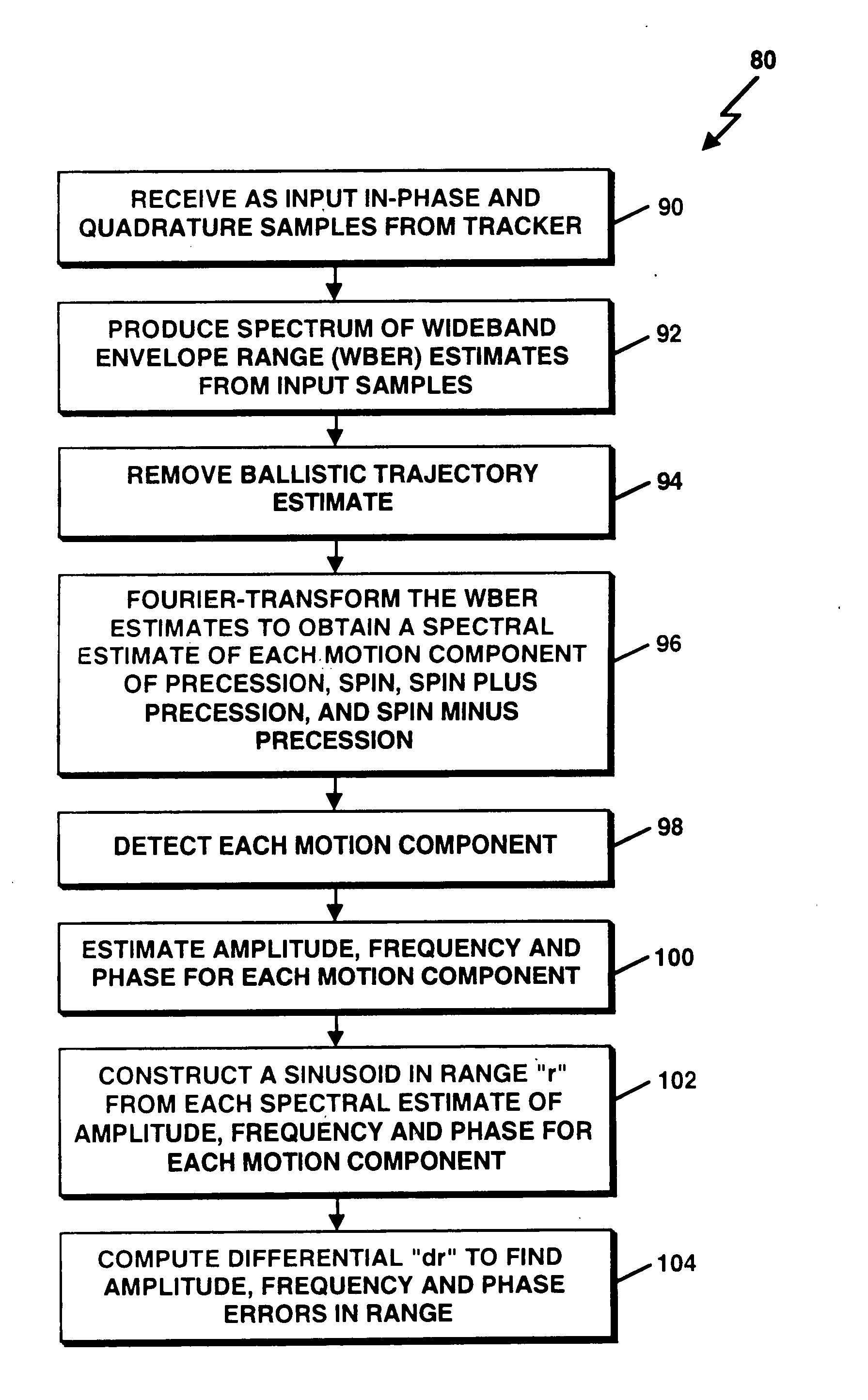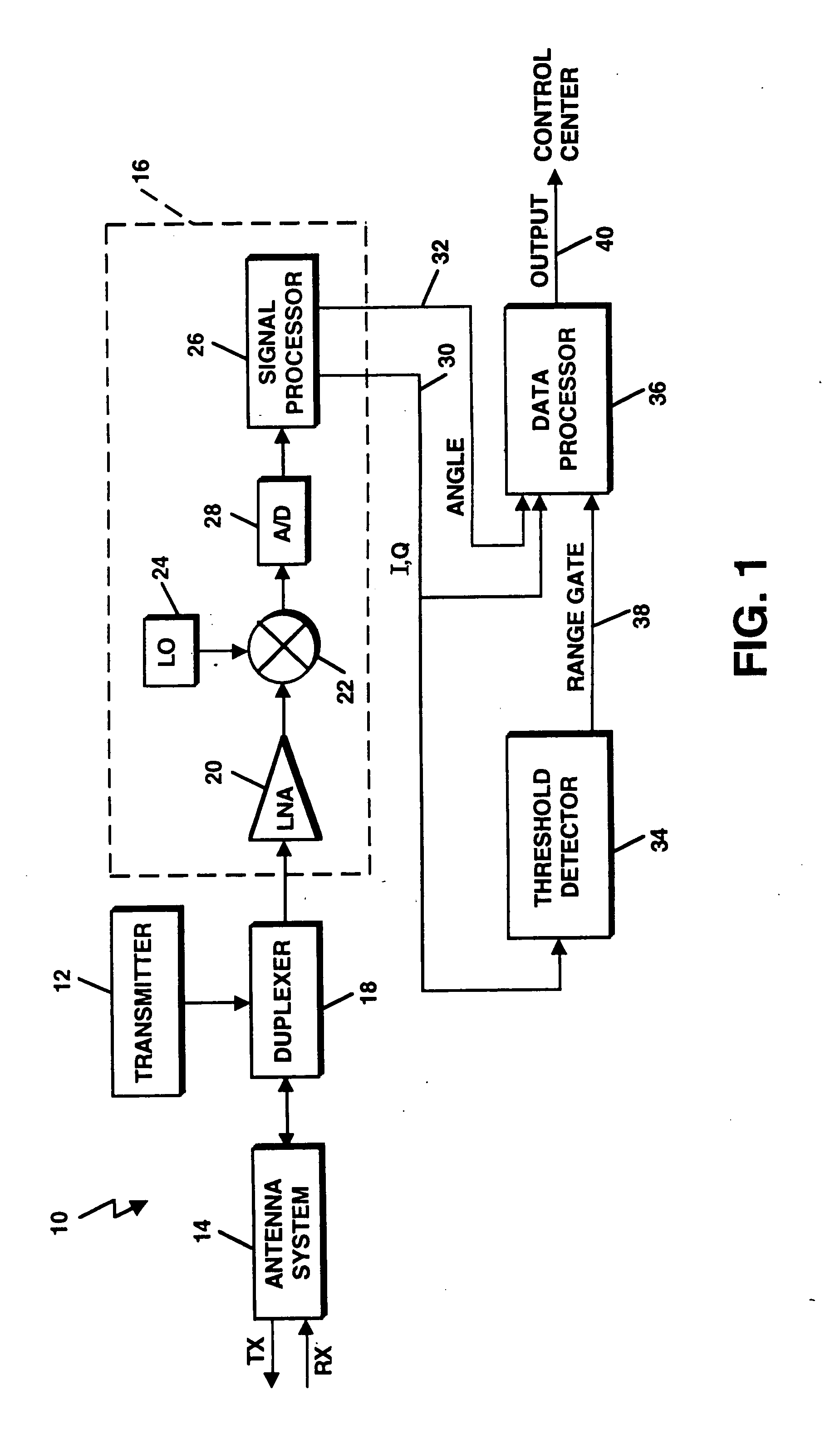Process for phase-derived range measurements
a phase-derived and range-derived technology, applied in the field of radar systems, can solve problems such as reducing the safety margin built into radar to cope with interference, and achieve the effect of reducing the signal-to-noise ratio (snr) and data ra
- Summary
- Abstract
- Description
- Claims
- Application Information
AI Technical Summary
Benefits of technology
Problems solved by technology
Method used
Image
Examples
Embodiment Construction
Referring to FIG. 1, a tracking radar system 10 is shown. The tracking radar system 10 may be a ground-based radar system, but could be employed on a ship or in an aircraft or other airborne or non-airborne vehicle as well. In one embodiment, the tracking radar system 10 is implemented as a pulse Doppler tracking radar system. The tracking radar system 10 includes a transmitter 12, the output of which is delivered to an antenna system 14 for radiation in the form of a transmit beam. The antenna system 14 collects echo (return) signals received from a target. The return signals are processed by a receiver 16 to detect the presence of the target and determine its location in range and in angle. The antenna system 14 can include a mechanically or electronically rotating antenna. A duplexer 18 coupled to the transmitter 12, receiver 16 and antenna system 14 allows the antenna system 14 to be used on a time-shared basis for both transmitting and receiving.
Still referring to FIG. 1, th...
PUM
 Login to View More
Login to View More Abstract
Description
Claims
Application Information
 Login to View More
Login to View More - R&D
- Intellectual Property
- Life Sciences
- Materials
- Tech Scout
- Unparalleled Data Quality
- Higher Quality Content
- 60% Fewer Hallucinations
Browse by: Latest US Patents, China's latest patents, Technical Efficacy Thesaurus, Application Domain, Technology Topic, Popular Technical Reports.
© 2025 PatSnap. All rights reserved.Legal|Privacy policy|Modern Slavery Act Transparency Statement|Sitemap|About US| Contact US: help@patsnap.com



